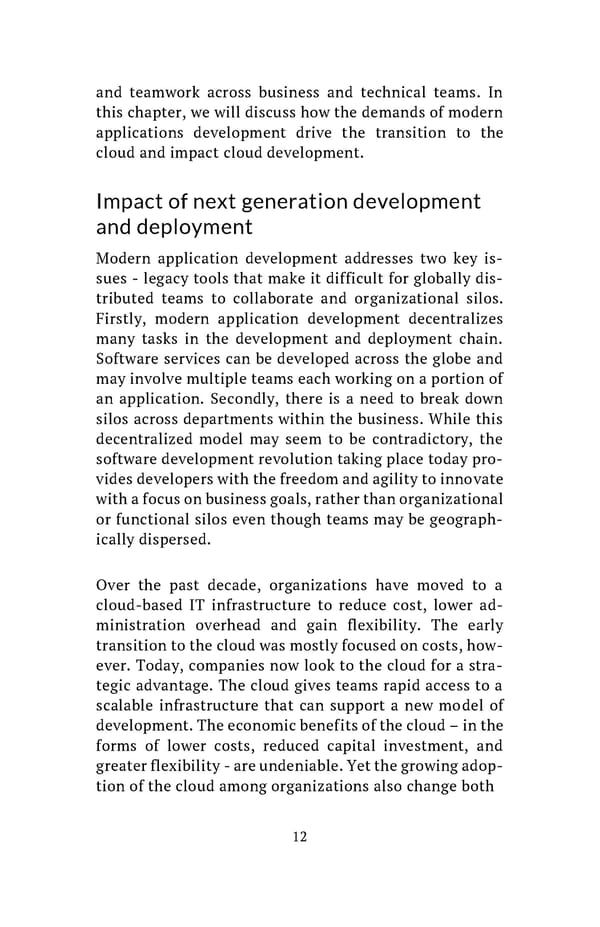and teamwork across business and technical teams. In this chapter, we will discuss how the demands of modern applications development drive the transition to the cloud and impact cloud development. Impact of next generation development and deployment Modern application development addresses two key is- sues - legacy tools that make it difficult for globally dis- tributed teams to collaborate and organizational silos. Firstly, modern application development decentralizes many tasks in the development and deployment chain. Software services can be developed across the globe and may involve multiple teams each working on a portion of an application. Secondly, there is a need to break down silos across departments within the business. While this decentralized model may seem to be contradictory, the software development revolution taking place today pro- vides developers with the freedom and agility to innovate with a focus on business goals, rather than organizational or functional silos even though teams may be geograph- ically dispersed. Over the past decade, organizations have moved to a cloud-based IT infrastructure to reduce cost, lower ad- ministration overhead and gain flexibility. The early transition to the cloud was mostly focused on costs, how- ever. Today, companies now look to the cloud for a stra- tegic advantage. The cloud gives teams rapid access to a scalable infrastructure that can support a new model of development. The economic benefits of the cloud – in the forms of lower costs, reduced capital investment, and greater flexibility - are undeniable. Yet the growing adop- tion of the cloud among organizations also change both 12
 Building Cloud Native Apps Painlessly Page 14 Page 16
Building Cloud Native Apps Painlessly Page 14 Page 16